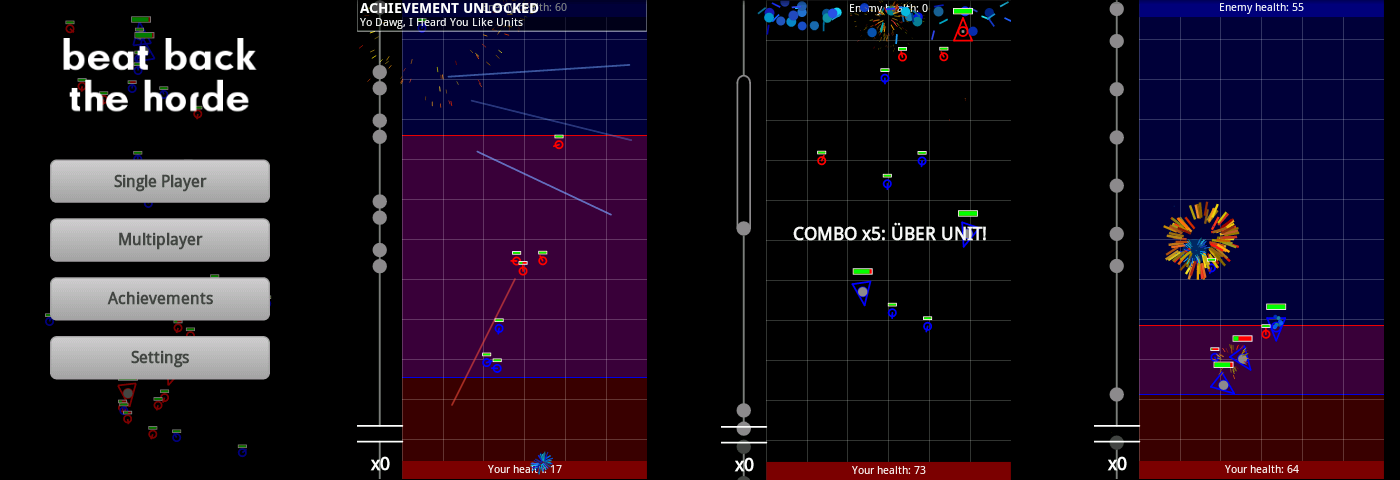an npc codes
Beat Back the Horde

Summary
Research Topics
Game Engines | Flocking | Game Design
Contributors
Evan Wallace | Justin Ardini | Tala Huhe | Zach Davis | Kayle Gishen
Description
Beat Back the Horde centers around a unique game mechanic, which we term "rhythm-time strategy." Players must tap and drag on the screen to the beat of a song, placing units and walls to maximize their offense and defense. If they successfully keep the beat, they can complete combos to create Über units! A clear, effective tutorial provides an easy learning curve for new players, and the AI supports highly controllable difficulty. For a further challenge, players can compete against each other over Bluetooth.
The units are all AI-controlled, using a flocking algorithm (Reynolds 1987) to cohesively move towards and attack the enemy's units and base. Nonetheless, placing units and walls appropriately to maximize their effectiveness requires quick decision-making. Units deal area-of-effect damage, so clustering too many in one place is less effective, but leaving an area too sparsely guarded could leave your base vulnerable!
Built in a custom game engine for Android, originally as part of an "Android Game Engines" class at Brown University, the game's simple but attractive geometric graphical style, intuitive but addictive gameplay, and free, open-source, low-spec-friendly release brought it a 4-star rating and over 10,000 downloads on the Google Play Store for Android.